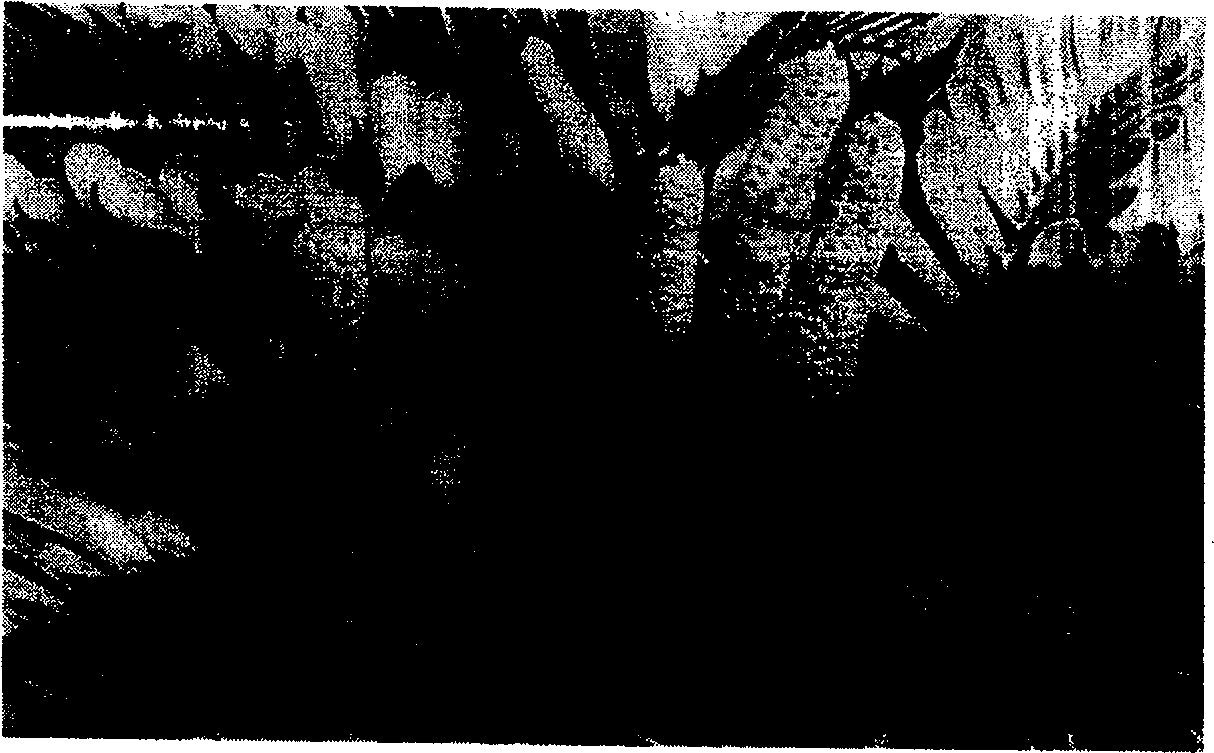Reproductive isolation control method for cycadopsida
A technology of reproductive isolation and control methods, applied in the field of reproductive isolation control of cycads, can solve problems such as concerns about wild distribution status
- Summary
- Abstract
- Description
- Claims
- Application Information
AI Technical Summary
Problems solved by technology
Method used
Image
Examples
Embodiment 1
[0018] Cycas fairylakea (Cycas fairylakea) in Cycadaceae was used for artificial pollination by dry pollination. The megasporophyll and microsporophyll of Xianhu cycas are both cone-shaped. Concrete steps are as follows, 1) collect pollen, turn from light yellow to bright yellow before Xianhu cycad male cones bloom, and when most of the microsporophylls are opened, the whole male cones are picked from the base bulbs, and spread below Put a piece of white paper, and then gently pat the top of the male cones. After the mature pollen basically falls naturally, place the male cones upright on the white paper for collecting pollen with the base facing down, and wait for post-ripening. Since the male and female flowering periods of cycad plants are mostly different, about a week or so, for the pollen that cannot be pollinated temporarily, collect it and put it into a small bottle, and put it in the refrigerator at 4°C for later use. It is generally not suitable to store for more th...
Embodiment 2
[0020] Artificial pollination was carried out by wet pollination using Zamia furfuracea from Zemaceae. Both the megasporophyll and microsporophyll of Rhizoma chinensis are coniferous. The specific steps are as follows, 1) collect pollen, turn from brown yellow to brown before the male cones of Rhizoma chinensis are opened, and when most of the microspore leaves are opened, the whole male cones are picked from the base bulb and laid below A piece of white paper, and then gently pat the upper part of the male cones. After the mature pollen basically falls naturally, place the male cones upright on the white paper that collects the pollen with the base facing down, and wait for post-ripening. 2) Determine the pollination time. When the female cones of L. chinensis Zemi start to crack horizontally from the top, it indicates that the female cones have matured and can be artificially pollinated. 3) Artificial pollination by wet pollination method, put the pollen into clean water at...
PUM
 Login to View More
Login to View More Abstract
Description
Claims
Application Information
 Login to View More
Login to View More - R&D
- Intellectual Property
- Life Sciences
- Materials
- Tech Scout
- Unparalleled Data Quality
- Higher Quality Content
- 60% Fewer Hallucinations
Browse by: Latest US Patents, China's latest patents, Technical Efficacy Thesaurus, Application Domain, Technology Topic, Popular Technical Reports.
© 2025 PatSnap. All rights reserved.Legal|Privacy policy|Modern Slavery Act Transparency Statement|Sitemap|About US| Contact US: help@patsnap.com



